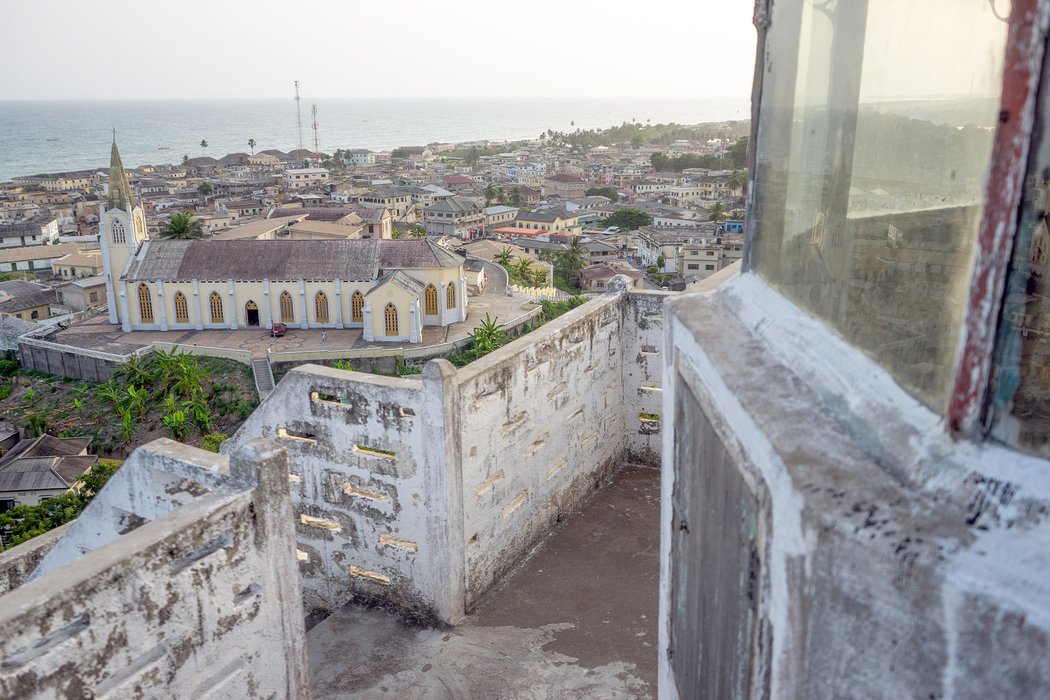The Fort William Lighthouse in Cape Coast
We approached the gates of Cape Coast Castle, one of Ghana’s few UNESCO Heritage Sites, and right before paying for entrance… changed our minds. Instead of visiting the castle, we turned around and marched over to the nearby Fort William Lighthouse, perched on a hill in the middle of town. It was a rash decision, but at the end of the day, we both agreed it had been the right one.

We must be among the very few tourists who’ve ever visited Cape Coast and not taken a tour of the Cape Coast Castle. I mean: that’s what you do in Cape Coast. From the perspective of most tourists, that’s the only thing you do. But at the end of the day, we just couldn’t bring ourselves to visit a third slaving site, having already seen similar castles in Elmina and Axim within the past week. Two depressing reminders of humanity’s brutality were quite enough.
For some reason, Cape Coast Castle draws higher numbers of tourists than either Elmina or Axim. And it therefore draws more of the people who prey upon tourists. The instant we were within the castle’s immediate sphere, we were accosted by guys selling bracelets, children seeking donations, ladies pushing sculptures, and the same “hand-drawn” paintings we’ve been presented with in every single city in Ghana. But in Cape Coast, the people were ruder. For example, after telling the donation-seeking kids “no”, we were given the middle finger and laughed at.
Ugh, no thanks. Instead, we looked toward the lighthouse. This monument was built by the Brits in 1820, and has survived the years in good condition. We approached the base, and noticed immediately that there were no other tourists. No touts. No annoyances. And no fee for entry. Yes, we were missing out on a World Heritage Site, but it was clear that we were about to have a much more pleasant experience.

We were greeted at the top of the stairs by the lighthouse’s caretaker: an animated character who also lives there. Judging by his enthusiastic reception, this place doesn’t see many tourists. He introduced us to the history of the structure and brought us all the way up, showing off the view and pointing out important colonial buildings and churches on the horizon. He clearly had a great love for the place, and his attitude was refreshing.
We’ve often experienced the fact that lesser-known, secondary sites can provide a more agreeable experience than the big ones. (It was practically our motto in Lisbon, which has a dozen sites everyone has to see and are crowded to the point of agony, and then dozens more which receive almost no visitors.) Of course, it’s very possible we missed out on an unforgettable experience by skipping Cape Coast Castle, but my gut tells me that it would have been very similar to the other castles we’d already visited. I guess we’ll never know for sure… and I’m okay with that.
From our Ghana Travel Blog
















